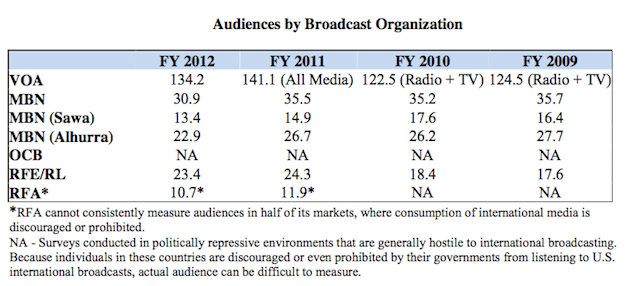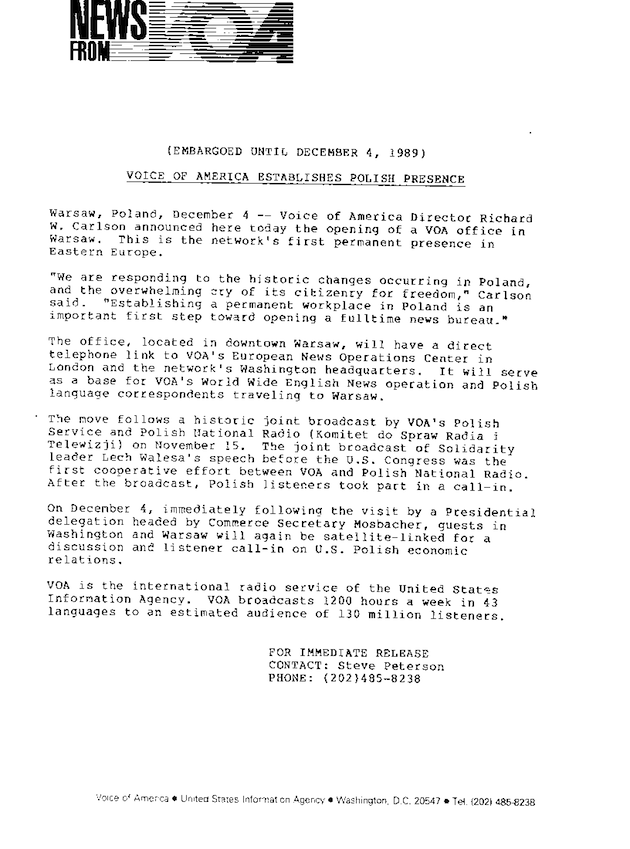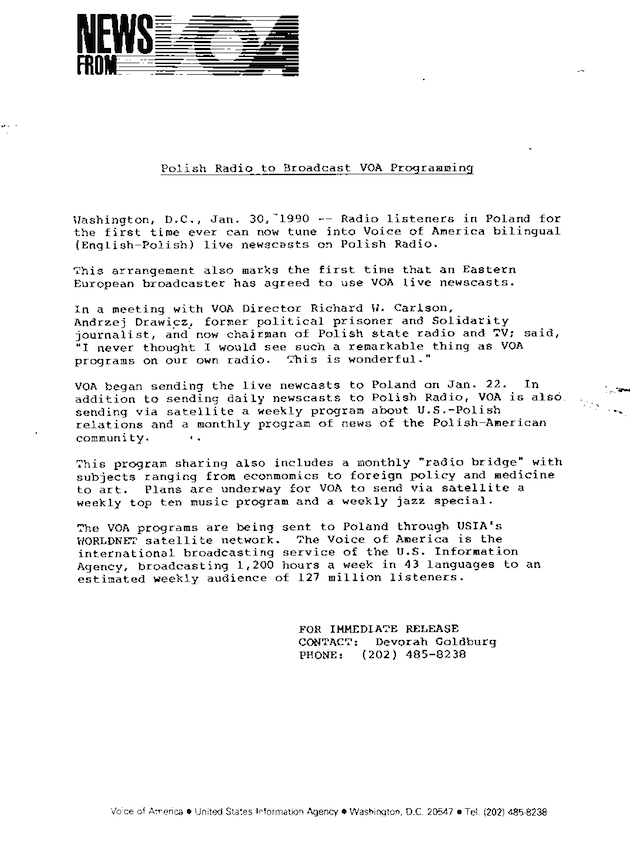Voice of America’s audience in 2013 is nearly the same as in 1989 despite about 40% population growth, new technologies, and higher budgets.
VOA Budget 1989 – $170 million
VOA Weekly Audience 1989 – 127-130 million (radio)
VOA Language Services 43
VOA Budget 2012 – $207 million
VOA Weekly Audience 2012 – 134 million (radio, TV, Internet, mobile apps)
VOA Language Services 43

In 1989, the Voice of America (VOA) broadcast over 1,050 hours weekly to 127 million people around the world in English and 42 foreign languages. The VOA operating budget for fiscal year 1989 was estimated to be $170 million. VOA’s audience in 1989 was almost entirely from radio broadcasts, although some VOA services had already started local radio and TV placement. (Audiences generated by local placement were not yet counted in 1989 as part of the global audience.)
The 1989 and 1990 Voice of America global weekly audience numbers were listed in a GAO report, VOICE OF AMERICA: Selected Personnel Practices Warrant Management Attention, and in 1989 and 1990 VOA press releases.
Not much has changed in terms of the size of VOA’s global audience between 1989 and today despite a significant growth, about 40%, of the world’s population, introduction of Internet and other new media technologies, tremendous expansion of VOA’s and particularly International Broadcasting Bureau’s (IBB) bureaucracy, replacement of many VOA full-time employees with contractors, and the growth of VOA’s budget itself from $170 million in FY1989 to $207 million in FY2012.

In 2013, VOA claims a weekly audience of 134 million, even with the with the addition of satellite TV, Internet, mobile applications, and placement of programs on local stations in certain countries. VOA still has 42 foreign languages and English. VOA’s budget is now $207.4 million (FY2012).
While VOA’s global audience has stagnated or even declined in some years between 1989 and 2013, the world’s population grew from about 5 billion in 1989 to about 7 billion in 2013.
In 1989, some VOA language services were already engaged in call-in, co-productions with foreign broadcasters, and local placement of radio and satellite television on national networks without the vast International Broadcasting Bureau bureaucracy that grew later and claimed to have invented these concepts.
While budgets and bureaucracy grew, the number of programs, programming positions, and quality of news reporting by the Voice of America has declined over the years. VOA no longer consistently provides original news and news reports on international and U.S.-related news events, such as the recent death of Poland’s first post-communist prime minister Tadeusz Mazowiecki and the White House statement on his passing, while at the same time posting up to five reports on the royal christening in Great Britain, and failing to attract audience attention through social media for these feature news stories.
In 1989, the VOA Polish Service, which no longer exists, was in the forefront of attracting audiences through cooperation with local national networks. VOA continues such projects in some countries, particularly in Latin America and even operates its own transmitters in some African and Middle Eastern countries, but its global audience has not grown in over two decades. Critics, both inside and outside of VOA, blame the stagnation on bad management by top IBB and VOA executives. They are also being blamed for poor employee morale.

